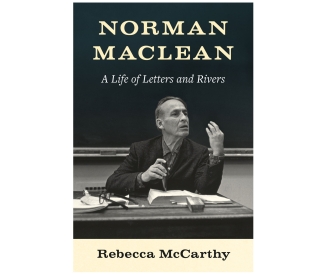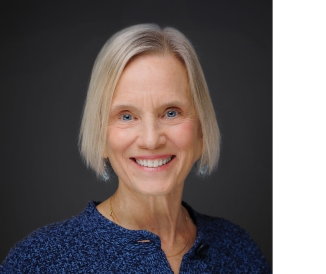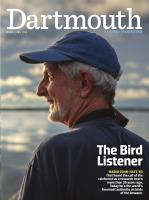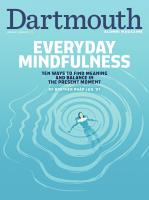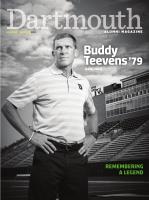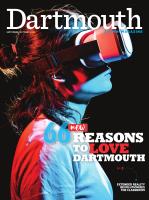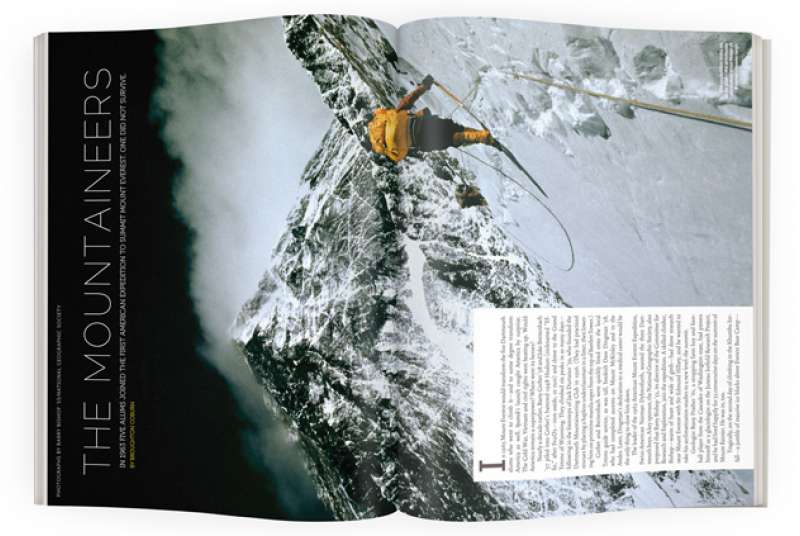
The Mountaineers
In 1963 Mount Everest would transform the five Dartmouth alums who went to climb it—and to some degree transform America as well. Sputnik’s launch caught America by surprise. The Cold War, Vietnam and civil rights were heating up. Would America remain a superpower? Where were its heroes?
Nearly a decade earlier, Barry Corbet ’58 and Jake Breitenbach ’57 piled into Corbet’s battered 1948 Hudson (nicknamed “Effie,” after Fe2O3—iron oxide, or rust) and drove to the Grand Tetons of Wyoming. They climbed six peaks in as many days—following in the footsteps of Jack Durrance ’39, who founded the Dartmouth Mountaineering Club in 1936. (They had practiced rescues by placing a hapless underclassman in a litter, then lowering him on primitive manila ropes from the top of Bartlett Tower.)
Corbet and Breitenbach were quickly hired onto the local Tetons guide service, as was tall, bookish Dave Dingman ’58, who had completed ascents on Mount McKinley and in the Andes. Later, Dingman’s dedication to a medical career would be the only thing to slow him down.
The leader of the 1963 American Mount Everest Expedition, Swiss-American Norman Dyhrenfurth, wanted the three Dartmouth boys. A key sponsor, the National Geographic Society, also proposed that Barry Bishop ’53, its director of the Committee for Research and Exploration, join the expedition. A skilled climber, Bishop—warm of heart and wide of girth—had done research near Mount Everest with Sir Edmund Hillary, and he wanted to take his acclimatization studies to a new level: the summit.
Geologist Barry Prather ’61, a strapping farm boy and football player from the Cascades of Washington state, had proven himself as a glaciologist on the Juneau Icefield Research Project, and he had lived happily for 53 consecutive days on the summit of Mount Rainier. He was in, too.
Tragically, on the second day of climbing in the Khumbu Icefall—a jumble of massive ice blocks above Everest Base Camp—Breitenbach was crushed beneath a falling wall of ice.
The expedition members decided to continue. Jim Whittaker and Nawang Gombu reached the summit on May 1, via the “standard” South Col route. Three weeks later Barry Bishop and Lute Jerstad followed them, but at Camp 6, 27,500 feet high on the Southeast Ridge, a stove exploded in flames. They carried on, and after a near-endless upward trudge, they saw it: the American flag, framed by the void of space, its colors pulsing like neon against the blue-black troposphere above. The date was May 22.
Tom Hornbein and Willi Unsoeld—climbing simultaneously from the West Ridge—reached the top three hours later, then followed footprints down the Southeast Ridge. Catching up with Bishop and Jerstad, the four of them were benighted. They bivouacked, hunched over and shivering, at 28,000 feet. The next morning Dingman ascended from Camp 6 on a body search that turned into a rescue. He revived them, though Bishop and Unsoeld would lose their toes to frostbite.
The route on the West Ridge had been pioneered two days earlier by Corbet, who cut steps up the Hornbein Couloir to Unsoeld and Hornbein’s high camp. A week before that, Prather had reached Camp 4, at 25,100 feet, but became cyanotic, with labored breathing and a racing pulse. Again, Dingman was there. He recognized high-altitude pulmonary edema, administered a bronchodilator and placed Prather on oxygen. Within half an hour Prather improved, but he had to descend.
After Everest, all four Dartmouth climbers (Breitenbach would have surely joined them if he could) were recruited by the CIA in the mid-1960s for an unusual operation in the Indian Himalaya. Gen. Curtis LeMay corralled Bishop into overseeing a clandestine operation designed to plant a plutonium fuel cell-powered surveillance device on Nanda Devi, a 25,645-foot peak, to spy on a nuclear missile test site in China.
Corbet (described by friends as “supremely able-bodied”) vowed to return to Everest, but a helicopter crash in 1968—while shooting a ski film with classmate Roger Brown ’57—paralyzed him from the waist down. Undaunted, Corbet jumped into kayaking, and his mountain-forged, whitewater spirit carried him into advocacy. He edited New Mobility, a magazine for the disabled, until his death in 2004.
In 1969 climbers found a body at the base of the Khumbu Glacier, and the U.S. embassy sent Bishop to identify it. The expedition-issue ice ax and sweater confirmed that it was Breitenbach’s. Bishop buried the remains behind the Tengboche monastery, in view of Everest. Later, Idaho’s fifth-highest peak was officially named Mount Breitenbach (12,140 feet—the altitude of his burial site).
Farm boy and glaciologist Prather continued his research in Alaska until 1987, when an oncoming car collided with his own, in Oregon. Bishop, who wrote a gripping article on Everest in the October 1963 issue of National Geographic, was claimed by an accident, too—when his car overturned near Pocatello, Idaho, a month after his retirement in 1994. Some of Bishop’s ashes lie near Breitenbach’s, behind the monastery at the foot of Everest.
Broughton Coburn is the author of The Vast Unknown: The First American Ascent of Mount Everest, due from Crown this spring.

